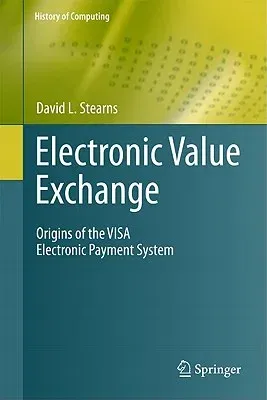Although those born after the 1990s might never have known a time
without them, payment cards and the electronic and computing networks
they activate went through an explicit process of creation and
adoption--a process which actively shaped these ubiquitous systems into
what they are today. To understand why these systems ended up the way
they did, one first needs to understand their origins, and how decisions
made in their early years fundamentally shaped the way they evolved.
Electronic Value Exchange recaptures the origins of one of these
systems in particular: the electronic payment network known as VISA.
The book examines in detail the transformation of the VISA system from a
collection of non-integrated, localized, paper-based bank credit card
programs into the cooperative, global, electronic value exchange network
it is today. Following an introductory chapter that sets the context,
chapters adhere roughly to chronological order, building the story in a
logical fashion.
Topics and features:
- Provides a history of the VISA system from the mid-1960s to the early
1980s, charting the design, creation and adoption of the system during
its foundation years and most prolific period of innovation
- Presents a historical narrative based on research gathered from
personal documents and interviews with key actors who designed, built,
and participated in the VISA payment system
- Investigates, for the first time, both the technological and social
infrastructures necessary for the VISA system to operate
- Supplies a detailed case study, highlighting the mutual shaping of
technology and social relations, and the influence that earlier
information processing practices have on the way firms adopt computers
and telecommunications
- Examines how "gateways" in transactional networks can reinforce or
undermine established social boundaries, and reviews the establishment
of trust in new payment devices
This insightful work will be of interest to researchers from a range of
disciplines, from historians of technology, business and finance, to
economists and sociologists, as well as the general reader. The use of
academic jargon is kept to a minimum, and brief explanations are
provided of useful concepts from science and technology studies for the
benefit of those without a background in this field.

